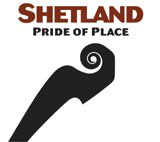Raise the brand standard

The branding of countries, regions and cities has become increasingly fashionable in the past decade as economies have gone global and a plethora of budget airlines has opened up mainland Europe to travellers.
Last week, the City of Madrid commissioned Landor Associates to carry out its first major destination branding programme to attract tourists and business interests and the Shetland Islands also recently unveiled a redesigned identity created by Corporate Edge (DW 18 November). Meanwhile, Interbrand is working on developing Edinburgh’s brand identity in a bid to position it as one of the world’s major city destinations (DW 17 June).
But as competition increases and the market becomes saturated with similar-looking destination brands, consultancies and clients are being forced to invest in sophisticated strategic projects that go far beyond the development of a simple logo or strapline.
‘To think in terms of graphics is not appropriate and is too simplistic now,’ explains Wally Olins, founder of Saffron Brand Consultants. ‘The elements of branding projects are extremely complex and a visual identity is a relatively small part of the puzzle. Creating a slogan, symbol or strapline is not a serious effort any more.’
Olins is currently working with the government of Poland on a ‘huge programme’ to rebrand the country. The consultancy was commissioned over a year ago and tasked with ‘finding out what Poland is, what it stands for and what it represents to people’.
So far the project has involved extensive international research and is now at the stage ‘where a core idea has been decided’. The proposition reveals a ‘creative tension’ caused by underlying historical, cultural and economic paradoxes existing in Poland, says Olins.
He explains, ‘If you think about Warsaw, the most powerful piece of architecture is the Palace of Culture. But this is a Stalinist building and it would be entirely inappropriate to communicate it in terms of branding.’
The proposition will be thrashed about in a series of meetings attended by key individuals from various different bodies over the next few weeks, with the aim of ‘discussing, investigating and thinking about how the paradox affects Poland’, says Olins. This will help develop the graphics to create an identity.
While this specific project is vast in its design brief, Olins warns, ‘Many clients and consultancies do not fully understand the infinite complexities of branding regions and nations yet.’
Another large-scale branding campaign, involving Wolff Olins and launched in conjunction with Accenture, the Goethe Institute and a range of media partners, is a project called DEbatte.
The work kicked off four years ago and aims to ‘put the German brand back on the agenda,’ says Henning Rabe, head of business development for German-speaking markets at Wolff Olins. The project is now entering its third phase and Wolff Olins is working with the government body to restructure the German chambers of commerce and trade across more than 120 destinations.
Rabe says, ‘This proposal is part of the DEbatte project and a piece in the puzzle of reinventing Germany as a brand. We have a clear vision.’
Branding destination projects are increasingly being treated by the sector as slow-burn programmes, with designers playing an integral role in the tweaking and refining of initiatives.
For example, the government of Liechtenstein, a principality in central Europe, is still seeking the advice of Wolff Olins to develop its brand following the launch of an identity this summer (DW 8 July).
The consultancy is currently involved in discussions to establish a ‘landmark’ for the country. One of the proposed designs is a bridge and a sponsor has already been lined up.
‘The landmark will be a manifestation of the developed identity. Branding cannot be led by a simple ad campaign anymore. Projects are long-term and involve an ongoing relationship,’ explains Keshen Teo, creative director at Wolff Olins.
Visit Britain acknowledges the power of long-term branding projects and is in the process of developing an effective measurement brand-tracking programme to put into place next year, as part of its commitment to develop the brand.
The organisation will also ‘enrich the experience of the brand’ and introduce a more extensive portfolio of visual images, particularly on its on-line domain, says Kenny Boyle, international marketing director at Visit Britain (see News, page 4). ‘It is about getting better at understanding the brand and moving it forward all the time,’ he adds.
Creenagh Lodge, chairman at Corporate Edge, believes there is a new shift in marketing and design ‘for totality, to promote everything, where the whole is more than the sum of the parts’.
Lodge has run branding projects for countries such as Scotland, New Zealand, Britain and the Shetland Islands. She says, ‘There is a big change underway, with governments becoming more savvy, creating more in-house design and marketing departments.’
Destination brands in review
-
Post a comment



